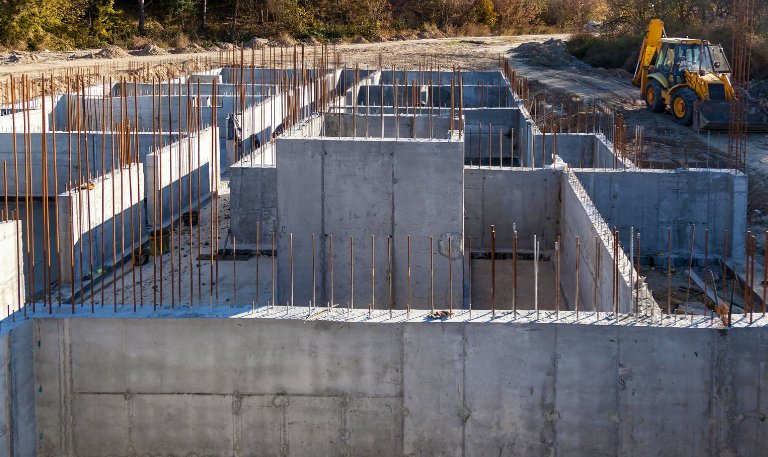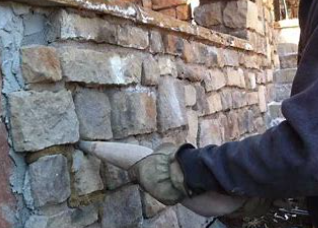8 Practical Tips For Concrete Block Waterproofing
Waterproofing concrete block foundations is essential for maintaining the structural integrity of your home or building. Without waterproofing, your concrete block foundation is at risk of deterioration. Proper concrete block waterproofing requires more than just sealing the surface; it involves a combination of strategies to protect both the exterior and interior of the foundation.
At Ernest Maier, we believe that protecting your concrete block foundation (or really any concrete foundation) requires careful planning and application of the right waterproofing methods. In this blog, we’ll share eight practical tips to help you manage and prevent water ingress so that your structure stands strong for years to come.
The Importance of Concrete Block Waterproofing
Concrete block foundations are inherently vulnerable to moisture due to the porous nature of the blocks. Over time, water can accumulate inside the blocks. If not addressed, this moisture can weaken the structure. This can lead to mold on concrete masonry walls, efflorescence, and even structural damage if not properly addressed. These issues can worsen as cracks form in the mortar joints and allow more water to enter the structure.
Factors such as hydrostatic pressure, ground saturation, and temperature fluctuations can also affect the performance of your foundation.
For these reasons, waterproofing measures are essential to the long-term durability of the building. Applying the right strategies and using the best materials can help prevent water damage, improve the lifespan of your structure, and avoid costly repairs in the future.
Implementing the following tips can help you mitigate these risks and prolong the lifespan of your structure.
Preparing Your Foundation for Waterproofing
Before applying any waterproofing solution, the first step is to prepare your foundation. Making sure that the surface is clean and free of debris is essential for the waterproofing materials to adhere properly. Cleaning your concrete block walls with water and a stiff brush will remove any dirt, dust, or loose mortar that could interfere with the application of waterproofing products. In some cases, power washing may be necessary to thoroughly clean the surface.
Assessing the condition of your foundation is equally important. Look for any visible cracks or signs of water damage that need to be repaired before proceeding with waterproofing. If there are any cracks, they should be filled with a high-quality concrete patching material to create a smooth, even surface. Taking the time to prepare the foundation properly helps ensure that your waterproofing efforts are effective and long-lasting.
Repair Cracks and Fill Gaps
One of the most critical steps in concrete block waterproofing is repairing cracks and filling any gaps in the foundation. Even small cracks can provide an entry point for water. As water seeps in, it can widen these cracks over time. Hydrostatic pressure from the surrounding ground can also push water through these cracks, especially if your foundation is below grade.
Using a high-quality crack filler is essential to make sure that the repair holds up under pressure. Addressing these vulnerabilities early can help prevent water from infiltrating the foundation and causing further damage. Keep in mind that water always follows the path of least resistance, so filling cracks before applying any waterproofing solution is key to maintaining a dry foundation.
Apply Penetrating Waterproofing Solutions
Penetrating waterproofing is a highly effective method for protecting concrete block foundations. This material penetrates into the concrete and reacts with moisture to fill the microscopic pores and cracks in the block walls. This reaction creates a long-lasting barrier that prevents water from entering the foundation.
Penetrating sealers are particularly useful for foundations that experience mild to moderate moisture issues. Blocking moisture pathways within the concrete offers a durable solution that helps manage water ingress and keeps your foundation dry.
Additionally, waterproofing can be applied to both the interior and exterior surfaces of the foundation. Of course, it depends on the level of protection needed.
Install a Drainage System
Managing water flow around your foundation is an essential aspect of concrete block waterproofing. Installing an internal drainage system can significantly reduce the hydrostatic pressure exerted on your foundation. These systems help divert water away from your foundation so that it doesn’t pool around the base of the structure.
French drains are particularly effective for reducing the amount of water that comes into contact with your foundation walls. Directing water to a lower point prevents water from seeping into the porous blocks.
On the other hand, sump pumps are ideal for areas where groundwater is prevalent. They actively pump water out of your basement or crawl space. Integrating these systems into your waterproofing plan will help prevent long-term water damage and reduce the need for future repairs.
Address Efflorescence
Efflorescence is the white, powdery residue that appears on masonry surfaces. It is a common issue in new concrete or block foundations. It occurs when water-soluble salts and minerals are drawn to the surface of the concrete as moisture evaporates.
While efflorescence itself doesn’t harm the structural integrity of your foundation, it indicates that moisture is present. This could lead to more severe issues if not addressed.
To prevent efflorescence, proper waterproofing is essential. Sealing the surface of the foundation and making sure that water doesn’t enter the blocks is essential for controlling the appearance of efflorescence. If efflorescence does appear, it can typically be removed using a stiff brush or a dilute acid solution. However, eliminating the underlying moisture issue is key to preventing its return.
Use Vapor Barriers
Vapor barriers are an excellent way to manage moisture in concrete block foundations, particularly for interior applications. These barriers are placed on the interior walls and floors to prevent moisture from passing through the concrete and into the living space.
Vapor barriers are particularly effective when combined with a drainage system, as they help direct any moisture that enters the foundation into the drainage pipes.
When applying vapor barriers, it’s essential to make sure that they are properly sealed around the edges and any penetrations, such as pipes or electrical conduits. This creates a continuous barrier that prevents moisture from entering the space and reduces the risk of mold growth and water damage.
Maintain the Exterior
Concrete block waterproofing doesn’t stop at the foundation walls. It’s also essential to manage water flow on the exterior of your property to prevent water from accumulating near the foundation. This includes maintaining your gutters, downspouts, and grading to guarantee that water is directed away from the building.
Gutters and downspouts should be cleaned regularly to prevent clogs. This is because clogs can cause water to overflow and pool near the foundation. Proper grading is also critical; the ground around your foundation should slope away from the building to prevent water from collecting and seeping into the blocks.
Exterior Sealing
One of the most effective ways to protect your concrete block foundation from water ingress is by applying a high-quality exterior sealant. Sealing the exterior of the blocks helps create a waterproof barrier that prevents water from entering the porous surfaces of the concrete. This method is especially beneficial for foundations that are below grade or in areas with high groundwater levels.
Applying an exterior sealant requires excavating around the foundation to expose the block walls fully. Once the walls are exposed, a waterproofing membrane or sealant can be applied to create a durable, long-lasting barrier. While this process may require more effort and resources, it provides an added layer of protection that can significantly extend the life of your foundation.
Monitor and Maintain
Finally, ongoing maintenance is essential for making sure that your concrete block foundation remains waterproof over time. Even with the best waterproofing measures in place, regular inspections and maintenance are necessary to catch any potential issues early.
Cracks can form, drainage systems can become clogged, and sealants may wear down over time, requiring reapplication. Monitoring your foundation and addressing any problems as they arise can help prevent minor issues from becoming major repairs.
Effective concrete block waterproofing is essential for maintaining the health and longevity of your foundation. At Ernest Maier, we specialize in providing high-quality materials and solutions for all your waterproofing needs, including blocks and concrete products. Whether you’re looking to address existing water issues or prevent future problems, our team is here to help. For more information on how we can assist with your waterproofing project, feel free to contact us today.

Masonry Sales RepresentativeMatt Henshaw
Latest News

4 Ways To Reinforce Concrete
Concrete is one of the most fundamental materials used in construction. If you’re working on a domestic project or a […]

The Environmental Benefits Of Using Ready-Mix Concrete
The construction industry is changing quickly to meet the growing demand for sustainability and eco-friendly practices. One of the most […]

6 Essential Tips For Grouting Stone Veneer
Grouting stone veneer is an important step in the installation process that can significantly impact the overall look and durability […]

Should You Fill Hollow Concrete Blocks?
Hollow concrete blocks are widely used in construction due to their strength, versatility, and lighter weight compared to solid blocks. […]
